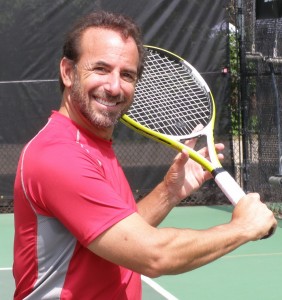Stroke of Luck | by

Fit, active, and just 18 years old, Parker resident Megan Dougherty hardly fit the stereotype of a stroke victim. But during a fluke, split-second accident at a horse show two years ago, she became one.
“I was approaching a jump, the horse stopped suddenly, and I hit my neck on his neck,” and fell to the ground, recalls Dougherty. Unfazed, she climbed back in the saddle and continued with her routine. But as her pinched carotid artery began to choke off blood flow to her brain, her left side went limp, she grew nauseous and dizzy, and she tumbled off again. It would be months before she fully regained her movement and speech.
And she’s one of the lucky ones.
“We have all grown up thinking that it is just the elderly that have strokes, but that’s not the case,” says Terry Dougherty, who – as a nurse – instantly recognized the signs of stroke in her daughter and got her the swift medical attention she needed. “If people don’t suspect stroke, they don’t act with urgency. The word needs to get out that young people can have them too.”
In fact, according to an October study published in the journal Neurology, more than 19 percent of strokes now occur in people under the age of 55, and mounting research suggests they are on the rise among younger people. One Centers for Disease Control paper, published in the Annals of Neurology in 2011, found that rates of hospitalization for ischemic strokes rose 37 percent among people age 15 to 44 between 1995 and 2008. Another recent study, by University of Cincinnati researchers, found that stroke incidence among 20 to 45-year-old Caucasians has more than doubled since 1993.
Doctors suspect that better diagnostic tools and a greater awareness about stroke may be boosting the numbers somewhat. And poor diet, smoking, and an increasingly sedentary lifestyle among the younger set may no doubt play a role (experts estimate 60 to 80 percent of strokes can be prevented). But they also note that strokes happen to young people for a host of other lesser-known reasons, such as side-effects from prescription drugs; a hereditary hole in the heart; or – especially in super athletic Colorado – trauma to the carotid artery via sporting accidents.
“The stereotype that people have of a stroke patient is of an older patient with high blood-pressure, high cholesterol, and heart disease,” says neurologist Chris Fanale, MD, stroke medical director for Health One. “In reality, we see strokes happen in people who are very atypical of that model. But unfortunately, they often don’t make it into the hospital in time because they say ‘This can’t possibly be a stroke’ and they go to bed and ignore it.”
Local doctors say even minor trauma, like an excessive chiropractic manipulation or yoga move can lead to a “dissection,” in which the carotid vessel bleeds and clots. If that clot goes unnoticed and breaks loose, choking off circulation to the brain, a stroke can occur.
In his new book, “Different Strokes: An Intimate Memoir for Stroke survivors, Families, and Caregivers,” (Skyhorse:2011) Boulder author Steve Boorstein tells the stories of several young survivors, including: a 22-year-old college student who blames her birth control pills for her sudden stroke; a vibrant 33-year-old Boulderite who suspects she dissected her carotid artery while scuba diving; a 23-year-old Nederland geologist who suffered three strokes, likely as a result of a previously undiscovered heart defect; and a 53-year-old who traces his stroke to whiplash sustained when he tripped over a root while jogging.
Boorstein had his own stroke at age 53, after a freak accident left him with whiplash, cracked ribs, and – unbeknownst to him – a tear in his carotid artery that would throw off clots into his brain for weeks to come. It would be three months before throbbing headaches, numbness in his left arm, and disorientation landed him in the emergency room. Once there, he would discover he had already had five Trans Ischemic Attacks (TIAs) – mini strokes that often signal the coming of a larger one. The large one would come that day, on the operating table, leaving Boorstein with lingering left-side paralysis, and memory loss.
“If I had just known the signs, and paid attention them, I might have been able to head this off,” he says.
The ticking clock
In recent years, outcomes for stroke patients have improved dramatically nationwide, and the death rate has fallen a whopping 35 percent, due largely to the advent of a powerful intravenous clot buster called tissue plasminogen activator (tPA), and new high-tech mechanical retrieval devices that allow doctors to dissolve, pluck, or vacuum out clots, restoring blood flow to withering neurons. The catch: Because tPA is a powerful blood thinner, it can only be given to patients who are not bleeding already. And even then it must be given within 4.5 hours, long before many people even suspect they are having a stroke.
With endovascular techniques, the window can be closer to 8 hours. But no matter the cause or potential treatment of the stroke, “time matters,” says Don Frei, director of neurointerventional surgery at Swedish Hospital.
Two-million brain cells die every minute during a stroke, according to the National Stroke Association.
“Unfortunately, with young people, stroke is often not the first, second, or even third thing they think about. It is often not high on the physician’s list of possibilities either. So they are under-recognized acutely,” says Frei.
One recent study by researchers at Wayne State University in Michigan found that, of 77 percent of patients – mean age of 37 – presenting with stroke at U.S. emergency rooms, 14.5 percent were misdiagnosed and sent home. Some were told they had migraine headaches, vertigo, or were drunk.
“Patients arriving with seemingly trivial symptoms like vertigo and nausea” should be assessed meticulously, the study authors wrote.
In many ways, Dougherty represents what to do when someone suspects a stroke.
The moment her mother noticed that her face was drooping and her left side was flaccid, she called 911, prompting a helicopter to be dispatched and a team of stroke specialists at Swedish Medical Center – a Joint Commission Certified Primary Stroke Center – to be convened.
“Everyone was at the hospital before she even landed,” Terry Dougherty recalls.
Within 2 hours and 45 minutes of her stroke, Megan had intravenous tPA coursing through her veins, on its way to dissolve the clot.
Today, she has 100 percent of her movement and speech back, is running and riding again, and is preparing to go back to college.
As her mom puts it: “We had many angels on our side that day.”
WHAT’S A STROKE?
According to the National Stroke Association, 795,000 strokes occur annually in the United States, making it the fourth-leading cause of death and a leading cause of disability. In essence, a stroke is a “brain attack.” Much like with a heart attack, a critical vessel is closed off – typically by a clot, plaque, or fatty deposits – blocking the flow of blood and oxygen to brain tissue until it dies.
Women, in general, are more likely to have them, in part due to their use of birth control pills (which nearly double stroke risk). African Americans are at twice the risk of having a stroke than Caucasians are.
KNOW THE SIGNS OF STROKE AND ACT FAST
F (Face): Ask the person to smile. Does one side of the face droop? A (Arms): Ask the person to raise both arms. Does one arm drift downward? S (Speech): Ask the person to repeat a simple sentence. Does the speech sound slurred? T (Time): If you observe any of these signs, make note of the time, and call 911.Source: National Stroke Association
Tags: Chris Fanale, Lisa Marshall, MD, stroke, Swedish Medical Center, warning signs
Leave a Comment
Please be respectful while leaving comments. All comments are subject to removal by the moderator.

